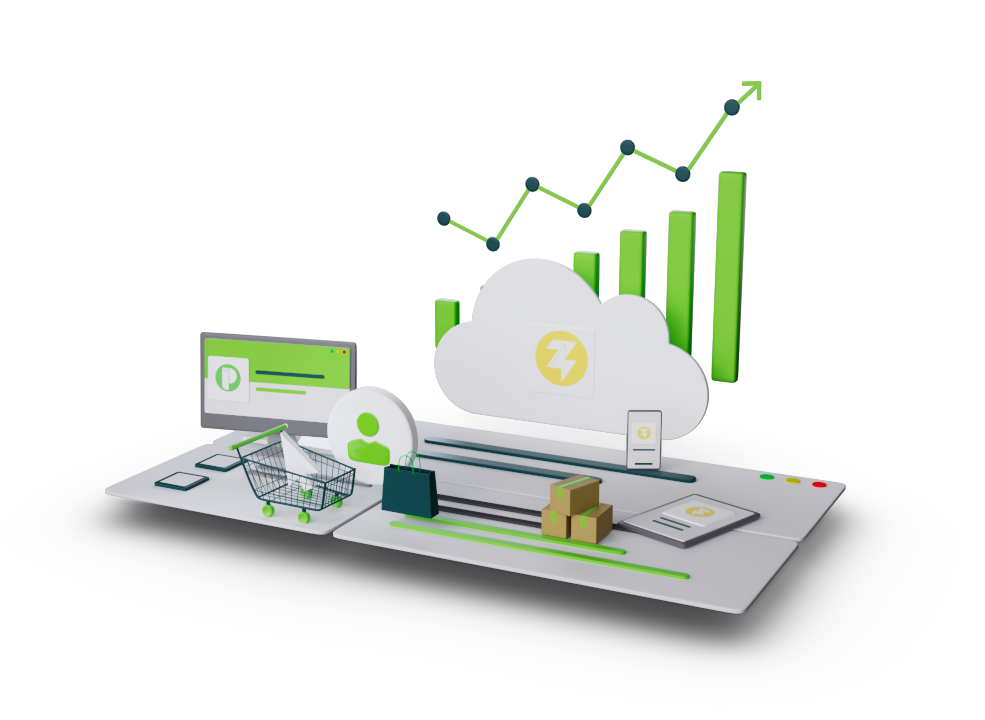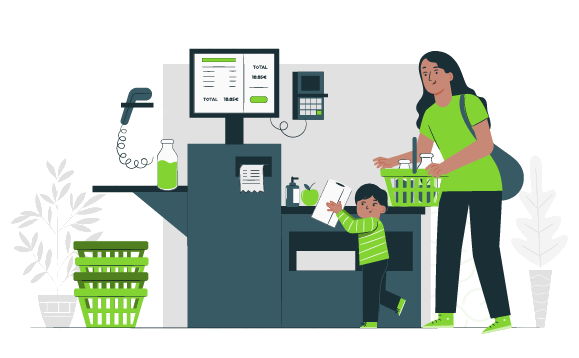How your POS solution can boost sales during a slow season
Every retail business, regardless of its size, market segment, or years in operation, experiences fluctuations in sales. These ups and downs are a natural part of the business cycle. While the festive and holiday seasons often bring a surge in footfalls and sales, there are equally inevitable slow periods that test the resilience, strategy, and adaptability of any retail operation.
Navigating through these slow seasons is crucial for long-term success, and one of the most effective tools that retailers can leverage is their Point of Sale (POS) solution. The POS system—once considered merely a billing tool—has now evolved into a powerful data-driven engine that supports inventory optimization, customer engagement, marketing, and operational efficiency. By intelligently using POS software, retailers can not only survive the low season but also prepare the ground for higher profitability in the long run.
Let’s explore how retailers can make the most of their POS systems to drive sales during slower times, step by step.

Maximize sales even in the slow season with Ginesys POS – built to power promotions, loyalty, and smarter retail insights.
Understanding Seasonal Slumps with POS Analytics
The first and most important step for retailers is identifying which times of the year typically bring lower sales volumes. For some, it may be the months right after the festive season; for others, it might be during the hot summer months or monsoon when foot traffic reduces.
Your POS system, if properly implemented and utilized, contains detailed historical sales data. This data can be mined to identify patterns and trends over months and years. Retailers can generate custom reports that break down sales by product categories, time of day, weekdays versus weekends, and even location-wise performance in case of multi-store operations.
Armed with this data, retailers can pinpoint exactly when their business begins to slow down. This is not just about recognizing slumps after they occur but predicting them in advance, giving retailers a proactive advantage.
For instance, if a POS report shows a consistent 25% drop in sales every January and February, the retailer can start planning promotions, staff scheduling, and stock adjustments in December. This foresight is only possible with an intelligent POS that offers deep analytics.

Boosting Employee Morale to Improve Sales Outcomes
One often overlooked aspect during a slow retail period is the morale of the employees. With fewer customers walking into the store, the enthusiasm and motivation levels of sales staff can dip, which may further impact sales. It becomes a cycle: fewer customers lead to disengaged staff, and disengaged staff contribute to fewer conversions.
However, with the help of your POS solution, retailers can introduce performance metrics and gamification. For example, the system can track individual or team-wise sales figures, identify top performers, and create dashboards that are visible and rewarding.
Retailers can organize internal contests based on sales numbers, customer sign-ups for loyalty programs, or even successful upselling or cross-selling cases. The POS system can automate and display results in real-time, bringing transparency and excitement.
Incentivizing staff through monetary rewards, recognition, or even simple gestures like “Employee of the Month” badges can boost team morale significantly. Encouraging healthy competition ensures that staff remain active, goal-oriented, and focused on delivering superior service even when the store is less busy.
More importantly, motivated staff often engage better with customers—improving the overall in-store experience and driving word-of-mouth and return visits, both of which are critical during a sales lull.

Unlock the full potential of your retail business with Ginesys POS Software – faster billing, smarter inventory, and seamless operations.
Strategic Inventory Adjustments Based on POS Insights
Carrying too much inventory during a slow season can be detrimental. Excess stock ties up capital, takes up shelf space, and may lead to obsolescence or markdowns. On the other hand, understocking can lead to lost sales opportunities if there’s a sudden demand spike.
The key is to strike a balance—and here again, your POS solution plays a pivotal role.
Retailers should use POS-generated reports to analyze which products have consistently sold well during previous slow periods. These insights can help them curate inventory to match anticipated demand. For example, if winter jackets always dip in March, but accessories like scarves or budget apparel perform well, those categories should be prioritized in procurement and display.
Additionally, POS systems with integrated supply chain and warehouse modules can help streamline restocking. Retailers can set automated reorder points and receive alerts when inventory hits the optimal minimum threshold. By reducing overstocking and ensuring popular SKUs are available at all times, retailers can reduce operational costs while still catering to niche seasonal demand.
The POS also allows segmentation of products into fast-moving, slow-moving, and dead stock. With this categorization, markdowns and bundling promotions can be implemented effectively to clear inventory during the slow season.
Driving Customer Engagement Through Loyalty Programs
Customer loyalty is one of the most powerful assets a retailer can have, especially during slow seasons when attracting new customers may be challenging. A strong customer base can provide steady revenue and even become brand advocates.
POS solutions enable the creation and management of detailed loyalty programs. Retailers can assign loyalty points to repeat customers, offer exclusive discounts, or even reward referrals. What sets modern POS systems apart is their ability to personalize these engagements.
Through the POS, retailers can track individual customer purchases, frequency of visits, and preferred categories. This allows retailers to go beyond generic promotions. For example, if a POS system shows that a customer consistently purchases from the skincare section, the store can send personalized offers via SMS or email for new arrivals or discounted bundles in that category.
Retailers can also celebrate customer birthdays and anniversaries with special messages and discount codes. These small touches help create emotional loyalty, which is often more powerful than transactional loyalty.
Furthermore, customers enrolled in loyalty programs can be targeted for upselling or exclusive previews during slow months—giving them a sense of priority and increasing the likelihood of purchases.

Marketing Campaigns Powered by POS Intelligence
Marketing becomes even more important during slow seasons—but instead of going broad and spending heavily, retailers need to be smart, targeted, and data-driven. This is where the POS system provides a strategic edge.
By analyzing past purchase behavior and segmenting customers into different personas, the POS can help craft hyper-targeted campaigns. For instance, promotional emails or SMS campaigns can be directed toward high-spending customers, frequent buyers, or those who haven’t visited in a while.
Retailers can promote clearance sales, introduce flash discounts, or host thematic events (like “Midweek Specials” or “Bring a Friend Fridays”) based on traffic and POS data.
Additionally, retailers can sync their POS with CRM and digital marketing tools, ensuring a unified campaign across platforms—whether it’s social media, email newsletters, or in-store screens. Messaging can be consistent, timing can be optimized, and performance can be measured accurately through POS-linked campaign tracking.
Such marketing campaigns can help drive footfalls, re-engage dormant customers, and keep the brand top-of-mind, even during quiet periods.
Ensuring Data Security and POS System Reliability
With increased reliance on data for decision-making, safeguarding this data becomes paramount. POS systems store vast amounts of customer, inventory, and transaction data—making them a potential target for cyber threats.
Retailers must ensure that their POS software is not only feature-rich but also secure. Modern POS systems come with robust encryption, role-based access, cloud backups, and compliance with data protection norms.
Implementing a secure POS system prevents data breaches, avoids regulatory penalties, and protects customer trust. Moreover, a reliable POS system with minimal downtime ensures that business operations, no matter how slow the season, continue smoothly and without disruption.
Embracing Retail Innovation Through Technology
The retail landscape is evolving at an unprecedented pace. From AI-driven recommendations to omnichannel experiences, technology is redefining customer expectations.
Retailers who wish to stay ahead of the curve need to embrace this shift. The POS system is at the center of this transformation. It connects inventory, billing, CRM, e-commerce, and analytics into one ecosystem.
During a slow season, when there's room to reflect and recalibrate, retailers should explore new POS features, integrations, and reports. This could include integrating loyalty apps, offering digital wallets, setting up omnichannel return/exchange policies, or launching an online storefront synced with in-store inventory.
Retailers who view the slow season as a period of innovation rather than stagnation are better positioned to succeed when the peak season returns.

Connect with Ginesys experts to turn slow seasons into growth opportunities
Transforming Slow Seasons Into Growth Opportunities
Slow seasons in retail are inevitable—but they don’t have to be unproductive. With a modern POS solution in place, retailers can gain clarity, control, and confidence to not just endure but excel during low-sales periods.
From understanding customer behavior to adjusting inventory, from motivating staff to launching data-driven campaigns, the POS system serves as a vital pillar of retail strategy. It enables a 360-degree view of operations, allowing retailers to make smart, proactive decisions that boost engagement, loyalty, and ultimately, revenue.
Today’s POS systems, like Ginesys, go far beyond basic billing—they serve as the command center for every successful retail operation. By leveraging its full capabilities, retailers can turn slow seasons into opportunities for brand strengthening, customer bonding, and operational streamlining.
In a competitive market, adaptability wins—and with the right POS system, every season can become a season of growth. Book a free demo today and see how Ginesys POS can power your retail success.

